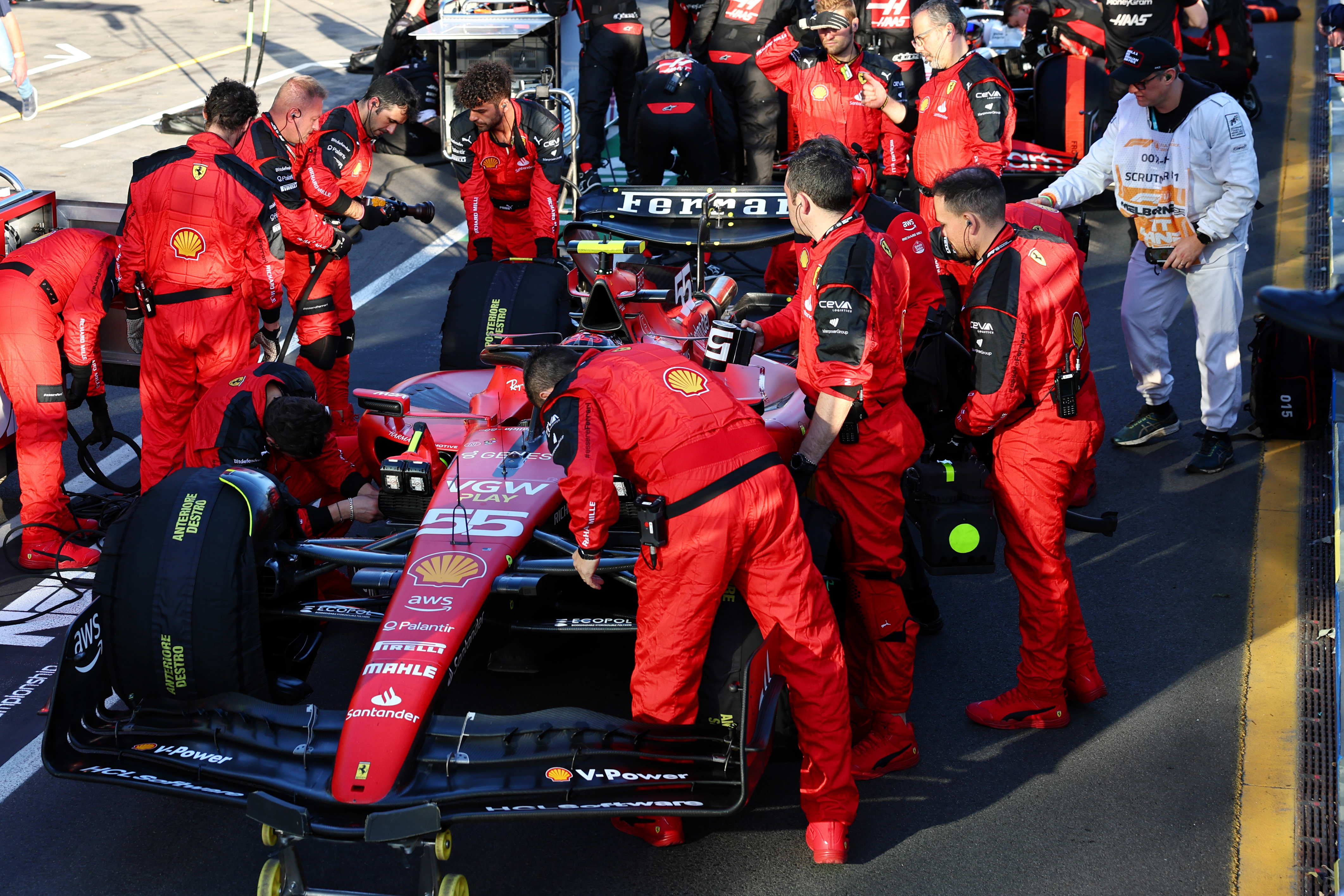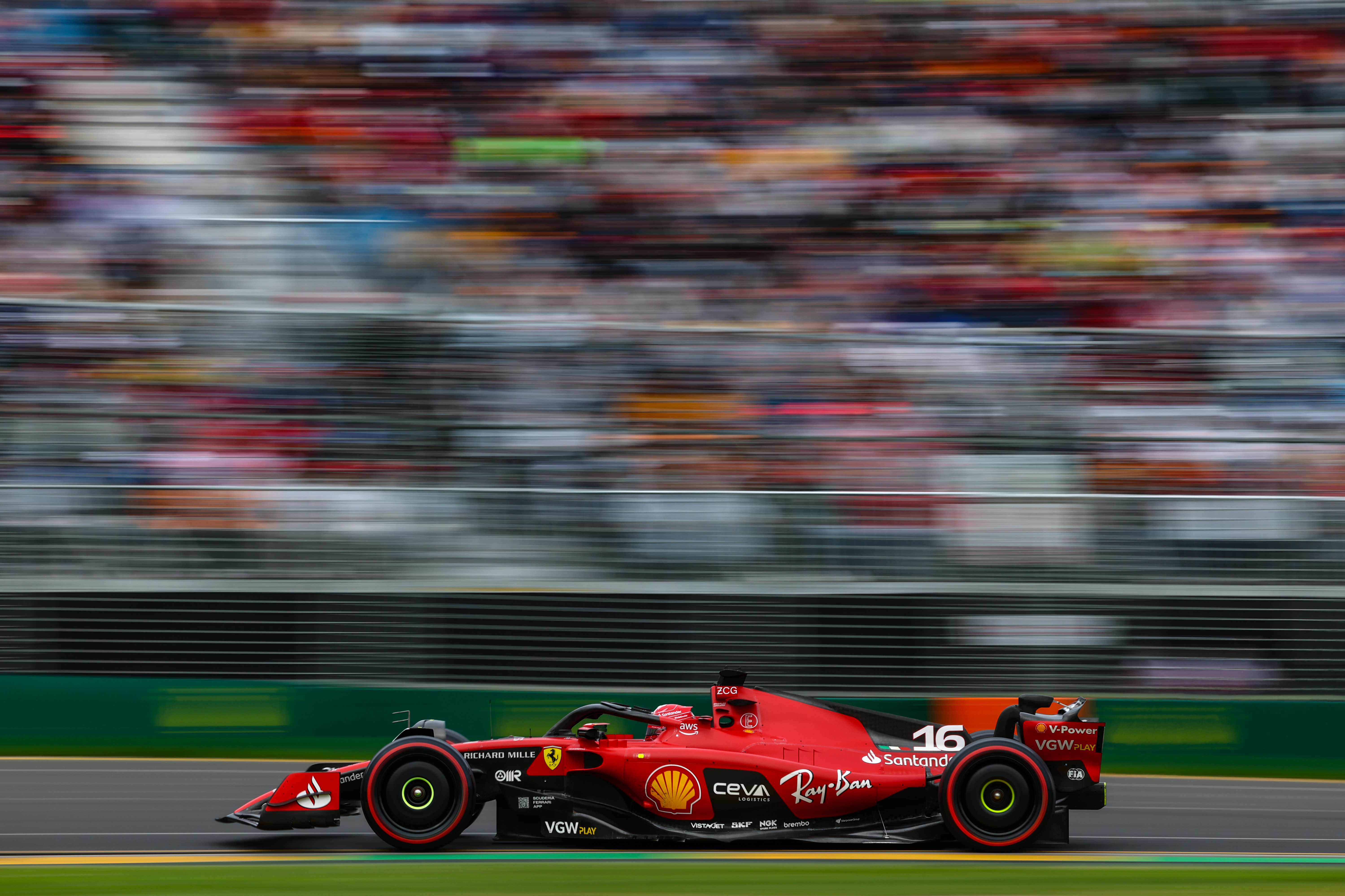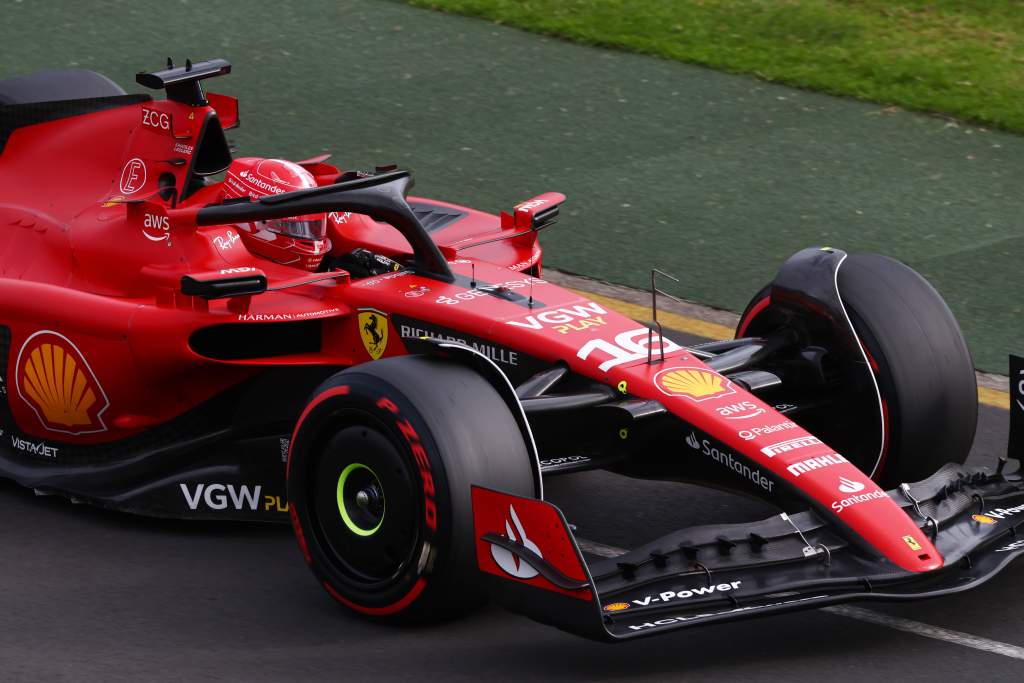Up Next

Ferrari isn’t planning to produce a “completely different” car this season and will focus on extracting the potential of its current Formula 1 concept despite Carlos Sainz’s recent claim that the development capacity of Red Bull’s car is higher.
Ferrari has yet to claim a podium finish in 2023 and has scored only 26 points, its worst haul after three races of a season of the V6 turbo hybrid era that started in 2014. While problems unrelated to pace, such as the five-second penalty that cost Carlos Sainz fourth place in Australia that the team is seeking to have reviewed and power unit issue, have contributed to this it’s clear Ferrari needs to make improvements if it’s to mount a serious challenge to Red Bull.
Vasseur believes there is still untapped potential in the car and says that the limitations of the cost cap and aerodynamic testing mean that it would be difficult to make the wholesale changes to its car required for what he calls a new car project.
“To do a new project during the season, to start from scratch, to do a new car with the cost cap first but also considering the restriction of windtunnel time, I don’t want to say that it’s impossible but it’s very difficult,” said Vasseur.
“Also, we have the feeling – and I hope that we are right and we are going in the right direction – that we still have tonnes of room for improvement on the car.
“As long as we are still able to develop the car to get points on the aero, to get a better balance, to get better stability and so on, I think it makes sense to push in this direction.”
Ferrari has been the closest challenger to Red Bull this season on pace, although it underachieved in qualifying in Australia. In the races, it has struggled with tyre management in a car that the drivers have described as “peaky” and that particularly suffers in traffic.
While last year’s distinctive car shape, with the large, scalloped upper-surface of the sidepods, has been carried over, the team attempted to improve its straightline speed performance even if this cost a little downforce in the corners. While the team succeeded in this objective, it’s still lagging behind Red Bull in most aspects including straightline speed.
Vasseur says that Ferrari is pushing on with its development plan, albeit with attempts to accelerate it so that new parts are introduced slightly earlier than originally planned.

Ferrari introduced some minor aero upgrades in Saudi Arabia with a modified front wing endplate, floor-edge tweaks and a circuit-specific beam wing. Despite not declaring any upgrades for Australia, Vasseur has referred to upgrades appearing but would not reveal what they were.
“You have the plan of development before the season and then you have to react to the circumstances due to the competitiveness and the behaviour of the car and it [the aim] will be to catch them very quickly,” said Vasseur when asked about how the upgrade plan had changed.
“We brought some good updates in Melbourne and we will continue. What we can do is to push to try to speed up this process, also take a different direction in terms of balance and so on.
“But we can’t change the plan massively after three races. We will adapt due to the circumstances, we will speed up, we will put all the resources to speed up the process and the updates that were planned for Barcelona will come in Imola and we will have the updates in advance at one or two races. But you can’t change massive things.”
Vasseur says that any changes for the next race in Azerbaijan will only be circuit-specific ones, but promised new parts in the run of races that follow Baku – save for at Monaco.
“We have a flow of updates that will come not for Baku, but for Miami, Imola, not Monaco, but [also] Barcelona. At each race we will have an update on the car.

“We are sticking to the plan that we made some adjustments in terms of balance and the behaviour. It was much better in Melbourne and will continue in this direction
“It’s not a B car if that’s what you want to say. We won’t come with something completely different. We will continue to update this one.”
Vasseur was encouraged by the performance of the car in Australia, which he felt reflected gains in terms of the tyre management in race conditions that Ferrari focused on working on in practice. However, he did also concede that “we have to confirm” this step at other tracks, starting with Baku at the end of the month.
Albert Park was generally not too hard on tyres, and while Vasseur pointed to Sainz’s race pace, which compared well to leader Verstappen once the Ferrari was in clear air having recovered from taking the first restart 10th, at that point the Red Bull driver was able to manage the pace thanks to being comfortably in control of the race.
Vasseur also pointed to problems in qualifying, where Charles Leclerc’s final Q3 run was compromised by the decision to abandon the tyre prep lap for fear of rain and early in the lap lost time behind his team-mate Sainz, who was on a prep lap, as shrouding Ferrari’s potential.

“In quali we didn’t deliver, we didn’t extract the potential of the car, and it’s where the frustration came from,” said Vasseur. “Even if the outcome of the race and the situation with the first red flag was against us, Carlos was able to bring the pace.
“It was good. Not mega, but it was good. And I think we did a good job in the race where we didn’t in quali. We could have been on the front row and then the understanding of the weekend would have been completely different.
“We have to understand why we were not able to. The situation in Melbourne was quite extreme with [the decision to do] the prep lap or not the prep lap, but at the end of the day the tyres were not ready for Turn 1 in the last stint and we lost the first row in this corner.
“But I think the analysis of the weekend would have been completely different with the first row, with the same car and the same drivers. That’s why we have to stay calm on the analysis.”
Ferrari does believe it has made gains with the car, which nonetheless remains tricky to drive. But Vasseur indicates that understanding the improvement in Australia, and whether it is track-specific or down to car gains, is the next step.
“We need to understand that we haven’t had the complete [range of tracks], but we always have the feeling that we are not far away and able to fight for the first row with them [Red Bull] in quali,” said Vasseur of Ferrari’s performance. “It was more difficult in the race.

“The advantage in the race in Melbourne was much lower. And I think this is coming also from the capacity of the driver to drive the car at the limit with different levels of fuel, different tyres and so on.
“If you have a car a bit too peaky, you can manage the situation in quali for one lap with new tyres, you know the balance after five sets of soft tyres. But over the race, it’s probably a bit more difficult and we need to take a little different direction.”
Despite this, Vasseur says Ferrari is going in “the right direction”. The question now is whether the gains it can make from here will be enough to close the gap on a Red Bull team that also won’t be standing still. In Azerbaijan, it will have the added challenge of a single practice session before heading into qualifying thanks to the sprint format of the weekend.
Longer-term, Vasseur has not discounted the possibility of bigger changes to the car concept for 2024. He indicates that doing so remains an option.
But his conclusion indicates this is a decision that has yet to be made, saying that “[on] the strategy of development, I think we have good updates and we will see later on in the season if we want to do a continuous improvement of this one and we have room for improvement, or if we have to change more massively the direction we take”.
Given the chance of challenging Red Bull for this year’s title already appear vanishingly small, the decisions made in the coming months could make or break Ferrari’s hopes of doing so in 2024.







